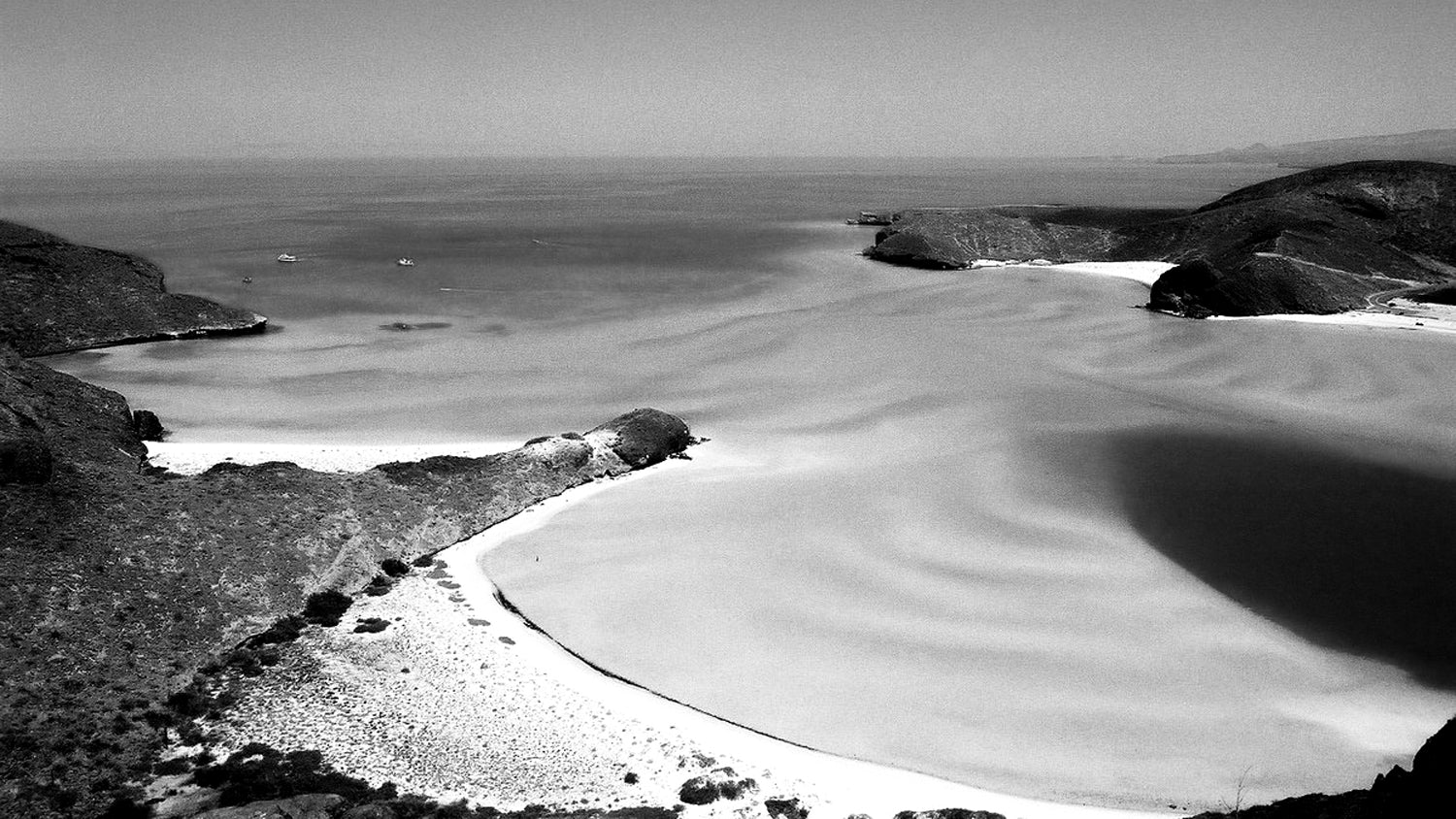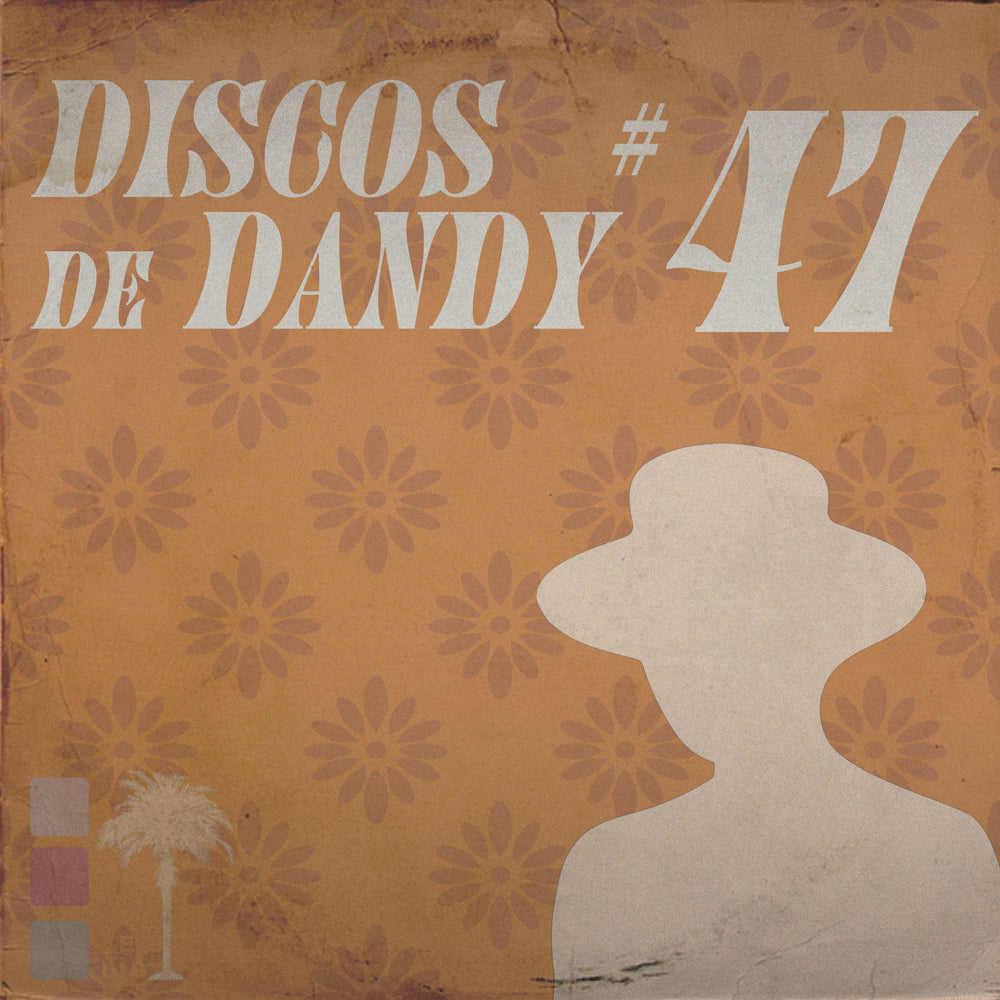For a few thousand pesos you can charter one of the small boats that anchor off the tourist beach just outside the town of La Paz. It comes equipped with a cooler, a sturdy shade structure, and a sun-brutalized captain who knows these waters very well. This boat will take you to a much nicer beach, more secluded, far away from the tourists and the town. It is a beach like a desert island, but hotter. The only people who live there are Cactus and Rock and the dusty old Palm. The sand is hot and yellow-brown and the water is a cool cool blue, the color of superclear mint toothpaste. The water tastes powerfully of salt.
On a pretty beach like this we made every effort to get the next shot. Once again the models found some shade while Yacco and Jack squabbled over the lighting, the angles, the outfits, the overall aesthetic . . . until Yacco threw up his hands in defeat, approached me huffing and puffing. “Take this Super 8 camera,” he said, “and shoot these models.” I hadn’t much experience with this kind of thing, so I held the Super 8 like a super laser and shot the whole damn place up, wasting much film in the process. I mostly shot the cactus and the rocks. And then I saw these beautiful sea-birds flying and I shot them too. Alas, they now live forever in film. Art, baby.
Heading back to the tourist beach later in the afternoon, you will pass by a shrine built into the shallow cave of one of the many rock islands scattered throughout the waters of Cortez. It is the forever home of melting candles and pretty gold and jewels, and a sanguine looking Virgin Mary statuette who watches over the sea. Each and every night the watchman rows out to the rock in his little wooden skiff to light the candles. It is a beautiful shrine.
* * *
Night falls like a sword, cutting off the bright blue world of the sea and the sun. Every candle has been lit. We are now celebrating the completion of the photoshoot with dinner at The Worst Sushi In The World, off main street, by the malecón. The highlight is by far the hamachi pesto roll. Or it might be the spicy crab stuffed strawberry jam tuna roll . . . It’s hard to say, it was so awful. But the miso soup is fantastic, and the adult films playing on the television are very entertaining. We leave feeling disgusted and amused.
Of course we end up at the oldest cantina in town. It’s the one Steinbeck used to visit during his Cortez stint: when he was enthralled by the sea and enamored with the light and life which has its existence in and around La Paz. It is warm and dimly lit inside and there is a pool table in the corner. Busying ourselves with billiards, we laugh and shoot pool and act pleasantly foolish together. The models are smiling, Yacco is smiling, even Tecate Jack appears muy feliz. The locals laugh and carouse, drinking mescal at the bar and at small tables. It feels like an old bar. Soon it will be time to go. We will sleep one more night at the hillside palazzo that was once the part-time residence of the flamboyant bandit of La Paz, may he rest in excess. From up here I can almost see the candles flickering all the way down there in the cave-shrine by the sea. I reach for the candles but they are too far away.
* * *
Sunrise, bags packed into the tiny-tuna-can-car and soon driving to the aeropuerto. Yacco and the models are grouchy: they would really like to get back to LA at this point. There are more jobs there, more photographs to be taken, more modeling and what have you. No longer possessing the stomach for a flight to Tijuana, the cross-border rigmarole and the inevitable drive home, I decided to stay behind. Old Tecate was on the same page, already looking for the next place to book. “Let’s go to Cabo,” I suggested. He bought into it.
Jack and I then herded Yacco and his models hastily into the jet like a band of disaffected cats, waved goodbye and got out of there as fast as we could. Phew!
Speeding our way toward the center of the peninsula, we are accosted by a cop on the outskirts of town. “This is very serious . . .” he said, shaking his helmeted head from side to side, “muy, muy serioso . . .” And he kept saying that: “This is very serious . . . very serious . . . you must follow me to jail . . .”
Sweating, Jack began to plead – “No-no-no amigo! No jail! Tenemos pesos para ti! Por favor!” I was sweating as well. It wasn’t looking good for us.
Eventually this Johnny of a La Paz Sheriff got his way: we paid him close to ten thousand pesos a piece. “Don’t worry about it,” Jack winked, speeding off once more. “Corporate expense account.”
Later that evening we found ourselves in the old town of Cabo San Jose, retiring to a second story saloon that overlooked the bustling town square. There we asked the waiter to play some of the canciones de los corazones rotos. Our goose was cooked, and the thought of going back to the US felt like a death sentence. It turns out there was no place for us in Cabo either. The old Mexican ballads playing on the radio only added to this desperate malaise. We were in a bad way.
By some strange stroke of fate we were approached by a young lady offering tarot prophecies. She referred to us as hombres interesantes, and insisted we have our prophecies read. Jack went first. She told him his goose was cooked, that he would soon be in “the jail” and that only the Goddess of Love could save him. And then she read mine: she told me that I needed to be more confident, to speak what I must speak, and learn to take faith in the strength of my own heart. If we would only follow the advice of the tarot, we would then be saved.
In the end we drove back to La Paz to catch the morning flight. It was canceled. Frustrated, Tecate Jack sought refuge at the hotel next to the cathedral, lizarding the hours away in the sun at the rooftop pool with the rooftop bar. And I lingered on in my own way, lingering around the restaurants, the saloons, the trinket vendors – lingering up and down the seafront, up and down, with nowhere to go and nothing to do but wait. Walking back to the cathedral that very last night, the federales crept up nice and slow, stopped and implored me to get in the truck with them – “Come with us,” they said in broken speech, “we take you to your room.” “No-no-no,” I said, waving them away with a brush of the arm: “NO-NO-NO.” I walked on, leaving them all properly rattled. I couldn’t be bothered with such trifles, not then. Instead I made my way down to the malecón just one last time: stood and looked out into the vast darkness, deep into the dark salty heart of the sea. Candlelight, as soft and faint as a whisper, trembled somewhere deep in this heart. Twice the cathedral bells tolled close by: twice the pain shot through my chest. Reaching out toward the flaming candles, my old heart faltered once, twice, nearly broke: the beauty had gotten the best of me.




Share:
LEISURE LETTER 58: DISCOS DE DANDY #26
LEISURE LETTER 60: DISOCS DE DANDY #27